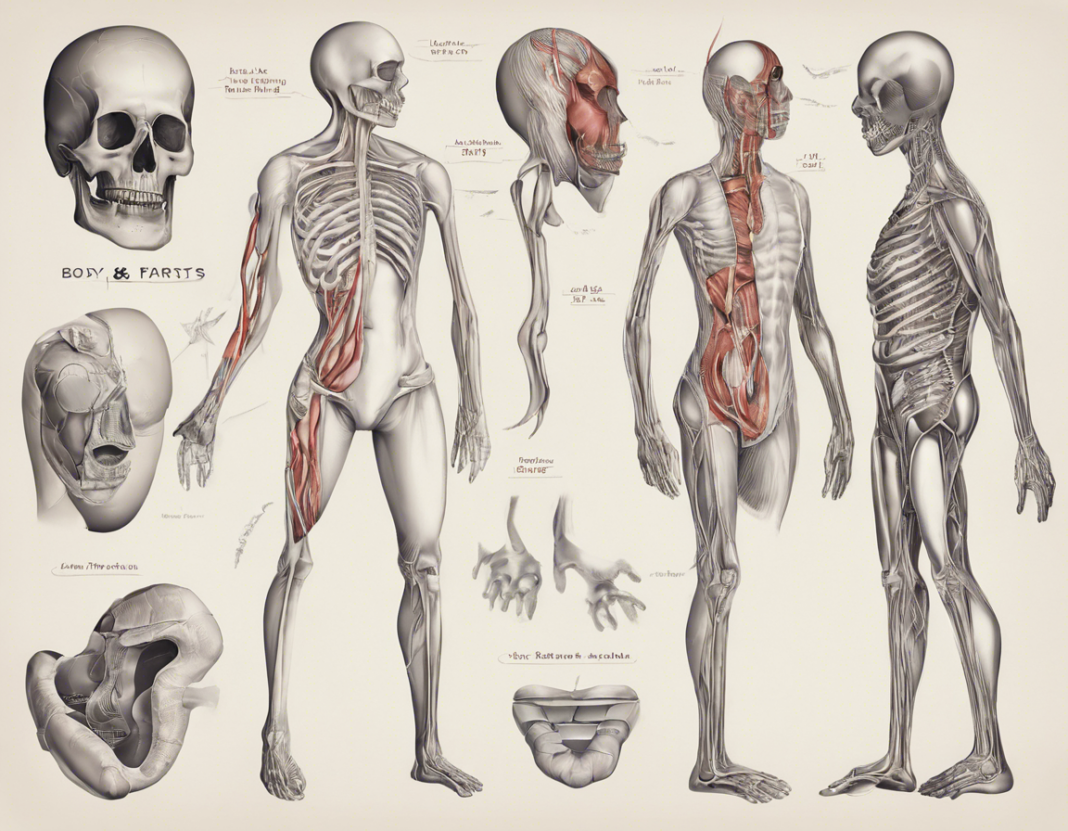Introduction
The human body is a marvel of biology, featuring an intricate system of organs, tissues, and cells that work together to sustain life. With approximately 37.2 trillion cells, each performing specific functions, the human body is a complex and fascinating entity. In this article, we will delve into the world of human body parts, exploring the functions, uniqueness, and significance of some of the most intriguing organs and structures.
The Brain: The Command Center
H2 Function and Complexity
The brain serves as the command center of the nervous system, responsible for processing information received from the sensory organs and sending signals to the muscles. It controls our thoughts, emotions, memory, and movement. As the most complex organ in the human body, the brain consists of approximately 86 billion neurons.
H3 Brain Hemispheres
The brain is divided into two hemispheres – the left and right hemispheres, each with specific functions. The left hemisphere is associated with logic, analytical thinking, and language, while the right hemisphere is linked to creativity, intuition, and spatial awareness.
H3 Plasticity
One of the most remarkable features of the brain is its plasticity, allowing it to reorganize itself by forming new connections and pathways in response to learning, experience, or injury.
The Heart: The Engine of Life
H2 Function and Circulation
The heart is a vital organ that pumps blood throughout the body, supplying oxygen and nutrients to the tissues and organs. On average, the human heart beats around 100,000 times a day, circulating about 2,000 gallons of blood.
H3 Structure
The heart is divided into four chambers – the left and right atria, and the left and right ventricles. The atria receive blood, while the ventricles pump blood out of the heart. Valves within the heart regulate blood flow to ensure proper circulation.
H3 Electrical System
The heart has its electrical system that controls the rhythm of the heartbeat. The sinoatrial node generates electrical impulses, causing the heart muscles to contract and relax in a coordinated manner.
The Eyes: Windows to the Soul
H2 Function and Vision
The eyes are sensory organs responsible for detecting light and converting it into electrochemical signals that the brain interprets as vision. The human eye can distinguish about 10 million colors and process visual information at a remarkable speed.
H3 Complexity and Structure
The eyes consist of several components, including the cornea, iris, pupil, lens, retina, and optic nerve. Each part plays a crucial role in the process of vision, from focusing light onto the retina to transmitting visual signals to the brain.
H3 Adaptations
The eyes have evolved various adaptations to optimize visual acuity, depth perception, and peripheral vision. These adaptations include binocular vision, allowing for depth perception, and the ability to adjust to different light conditions.
The Skin: The Body’s Protective Shield
H2 Function and Protection
The skin is the largest organ of the human body, serving as a protective barrier against external threats such as pathogens, UV radiation, and physical damage. It also regulates body temperature, stores fat, and houses sensory receptors.
H3 Layers of the Skin
The skin consists of three main layers – the epidermis, dermis, and hypodermis. The epidermis, the outermost layer, provides waterproofing and protection. The dermis contains blood vessels, hair follicles, and sweat glands, while the hypodermis insulates the body and stores energy.
H3 Regeneration
One of the remarkable features of the skin is its ability to regenerate, healing wounds and replacing old cells with new ones. Skin regeneration is a complex process involving cell proliferation, migration, and differentiation.
Frequently Asked Questions
-
What is the smallest organ in the human body?
The smallest organ in the human body is the pineal gland, located deep within the brain. -
How many bones are there in the human body?
An adult human body has 206 bones, which provide structure, support, and protection to the body. -
What is the role of the liver in the body?
The liver plays a vital role in metabolism, digestion, detoxification, and the production of essential proteins. -
Can body parts be transplanted?
Yes, certain body parts, such as kidneys, hearts, and corneas, can be transplanted from donors to recipients to treat various medical conditions. -
Why is it important to take care of our body parts?
Taking care of our body parts through proper nutrition, exercise, and healthcare can promote overall health and well-being, reducing the risk of diseases and disorders. -
How does the immune system protect the body from pathogens?
The immune system detects and eliminates pathogens such as bacteria, viruses, and fungi to protect the body from infections and diseases. -
What are some common disorders affecting the human body parts?
Common disorders include cardiovascular diseases affecting the heart, neurological disorders affecting the brain, and dermatological conditions affecting the skin. -
How does the skeletal system support the body?
The skeletal system provides structure, support, and protection to the body, allowing for movement, posture, and the production of blood cells. -
What are some ways to maintain healthy body parts?
Maintaining a balanced diet, regular exercise, adequate hydration, proper hygiene, and regular medical check-ups can help in keeping body parts healthy and functioning optimally. -
How do body parts communicate with each other?
Body parts communicate through the nervous system, endocrine system, and immune system, sending signals and chemical messages to coordinate functions and responses throughout the body.









